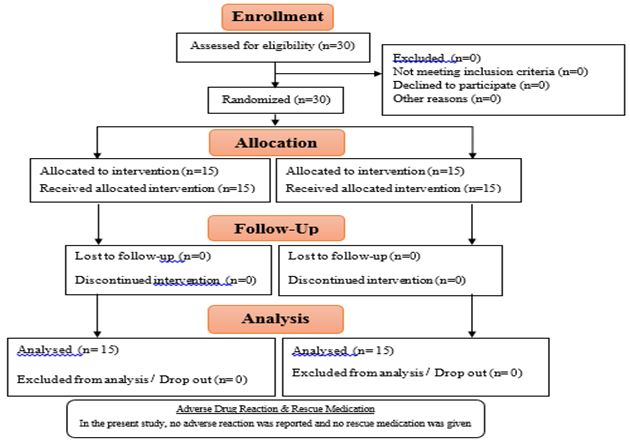A randomized controlled clinical study to evaluate the efficacy of Aragwadha Pushpa Lepa (Cassia fistula Linn.) in the management of Vyanga with special reference to Melasma
DOI:
https://doi.org/10.21760/jaims.8.12.1Keywords:
Aragwadha, Cassia fistula Linn., Chloasma, Melasma, VyangaAbstract
Vyanga is one of the Kshudraroga mentioned in the classics which are having Lakshana like Niruja, Tanu and Shyava Mandala. It can be correlated with Melasma in modern terms, which is also known as Chloasma. Melasma is an acquired pigmentary disorder, causing hyper-pigmented patches to appear on the facial skin. The prevalence varies between 1.5 % and 33.3 % in India. Female to male ratio in India is 4:1, indicating the high prevalence rate among females. Aragwadha Pushpa Churna along with Nimbuka Swarasa is applied over the hyper-pigmented patches in the condition of Vyanga in Cauvery river stretch of Namakkal district of Tamil Nadu as a folklore practice. A randomized clinical study was carried out to compare the efficacy with Varnya Gana Churna. The clinical study in the sample size of 30 was carried out in 2 groups with the intervention of Group A being Aragwadha Pushpa Churna Lepa and that of Group B being Varnya Gana Churna Lepa, with 30 days of drug application period and 15 days of drug-free follow up period. Differential diagnosis was ruled out with the help of Wood’s lamp. Assessment was done with the help of criterias like Amount of discolouration, Arbitrary grading and Area of the lesion. Various statistical tests like Parametric, Non-parametric, Friedman repeated measures ANOVA on ranks, etc. were carried out to analyse the results of the study. Both Aragwadha Pushpa Churna and Varnya Gana Churna have significant effect in the management of Vyanga with special reference to Melasma. When improvement in the individual criteria was compared, Aragwadha Pushpa Churna showed better results in reducing the amount of discolouration & the number of lesions. Whereas, Varnya Gana Churna showed better results in reducing area of the lesion.
Downloads
References
Upadhyaya Y, editor. Madhava Nidanam of Acharya Madhavakara; Kshudraroga Nidanam: 55, verse 39-40. Varanasi: Chaukhambha Prakashan; 2008. p.249-50.
Sarkar R, Arora P, Garg VK, Sonthalia S, Gokhale N. Melasma update. Indian Dermatol Online J [Internet]. 2014 Oct [cited 2023 Jan 14]; 5(4): 426-35.
Zhu Y, Zeng X, Ying J, Cai Y, Qiu Y, Xiang W. Evaluating the Quality of Life among Melasma Patients using the MELASQoL Scale: A Systematic Review and Meta-Analysis. PLoS One [Internet]. 2022 Jan 27 [cited 2023 Feb 11]; 17(1).
Fletcher J. What is Melasma? [Internet]. Brighton, East Sussex, UK: Medical News Today; 2018 [updated 2018 Nov 16; cited 2023 Jan 14].
Thirumaran G, Ganesan CM, Nandakumar K, Paulsamy S. Ethnobotanical plants used as curatives for skin diseases in a Cauvery river stretch, Namakkal district, Tamil Nadu, India. Int J Res Biol [Internet]. 2014 Dec [cited 2022 Oct 20]; 4(8): 1589-94.
Pallavi G, Gupta KV, Shreevathsa M, Chate VA, Balakrishna DL. Clinical evaluation of Varnya Gana Lepa in Vyanga (Melasma). AYU [Internet]. 2015 Apr [cited 2022 Jan 17]; 36(2): 151-6.















